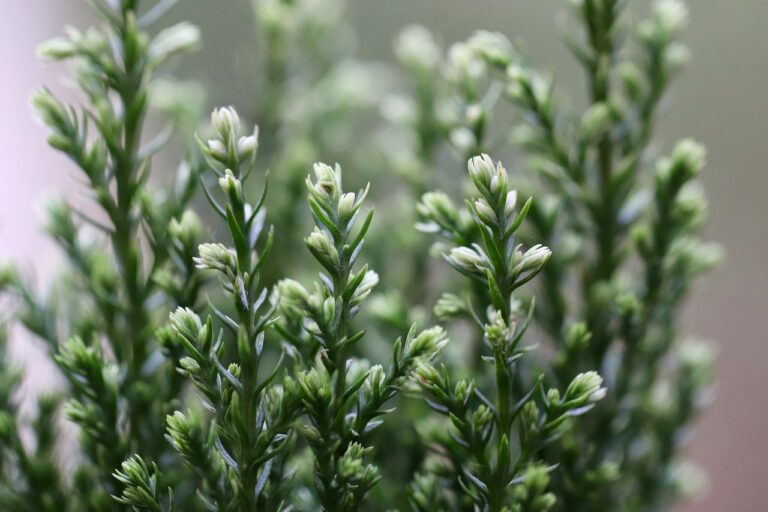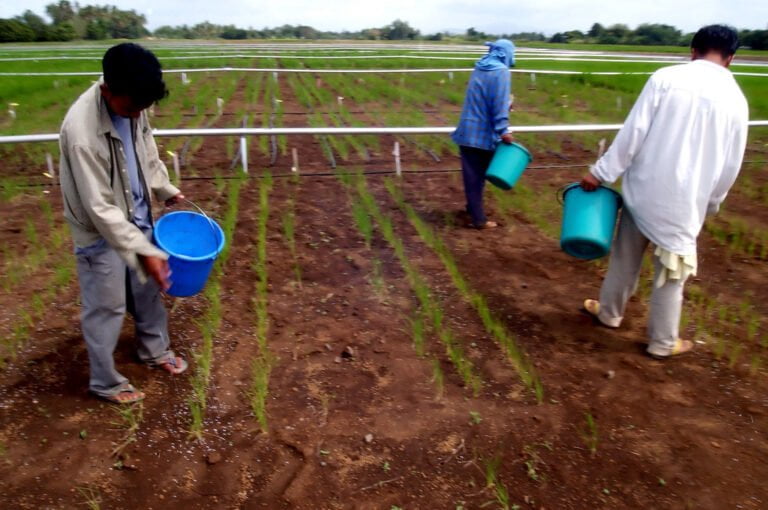Choosing the Right Plants for Different Soil Types and Improving Soil Quality for Optimal Growth
Are you struggling to find the right plants for your specific soil type? Do you want to improve your soil quality to ensure optimal growth? Look no further! In this article, we will guide you through choosing the perfect plants for different soil types, as well as share practical tips on improving soil quality. Whether you have clay, sandy, loamy, or alkaline soil, we’ve got you covered. Get ready to create ideal soil conditions for your plants to thrive!
Understanding Different Soil Types
To understand different soil types, you should first identify your soil’s composition and characteristics. Soil composition refers to the relative amounts of sand, silt, and clay present in the soil. These components determine the soil’s texture and affect its fertility. Sandy soil has larger particles and drains quickly, but it often lacks nutrients. Clay soil has smaller particles and holds water well, but it can become compacted and poorly drained. Silt soil falls in between, with moderate drainage and fertility. Understanding your soil’s composition is crucial for determining its fertility and making appropriate amendments. Soil fertility refers to the ability of the soil to provide essential nutrients to plants. Fertile soil contains a balanced combination of nutrients, organic matter, and beneficial microorganisms. By understanding your soil’s composition and fertility, you can make informed decisions on how to improve and optimize its conditions for plant growth.
Assessing Soil Quality
To assess soil quality, you need to evaluate the overall health and nutrient content of your soil. Assessing soil fertility is crucial in determining the suitability of your soil for plant growth. There are various soil testing techniques available to help you understand the characteristics of your soil. One common method is soil sampling, where you collect soil samples from different areas of your garden or field. These samples are then sent to a laboratory for analysis. The results will provide information on the pH level, organic matter content, and nutrient levels in your soil. This knowledge allows you to make informed decisions about soil amendments and fertilizers to improve soil quality and promote optimal plant growth. By regularly assessing your soil fertility, you can ensure that your plants receive the necessary nutrients for healthy development.
Clay Soils: Plant Options and Improvement Techniques
If you have clay soils, you can choose specific plants and employ improvement techniques to optimize their growth. Clay soil presents its own set of challenges, such as poor drainage and compaction. However, with the right approach, you can overcome these obstacles and create a thriving garden. When it comes to selecting plants for clay soils, opt for species that are tolerant of heavy, compacted soils. Examples include coneflowers, daylilies, and black-eyed Susans. These plants have deep root systems that help break up the clay and improve soil structure. Another technique to deal with compacted clay soils is to incorporate organic matter, such as compost or well-rotted manure. This will help improve soil drainage and nutrient availability. Additionally, consider using raised beds or containers to provide better drainage and prevent waterlogging. By implementing these strategies, you can transform your clay soil into a fertile and productive garden.
Sandy Soils: Plant Options and Improvement Techniques
Now let’s explore sandy soils and discover plant options and improvement techniques that will help you optimize growth in your garden. Sandy soil is characterized by its loose, granular texture and poor water retention capabilities. To combat these challenges, it is essential to choose plants that are well-suited to sandy soil conditions. Look for drought-tolerant plants that can withstand long periods of dryness and thrive in sandy environments. Examples include succulents, such as sedums and agaves, as well as native grasses like beach grass and sea oats. Additionally, implementing erosion control methods is crucial for maintaining your sandy soil. Consider using techniques such as planting groundcovers, installing retaining walls, or adding mulch to prevent soil erosion and improve moisture retention. By selecting the right plants and employing erosion control methods, you can transform your sandy soil into a thriving garden oasis.
Loamy Soils: Plant Options and Improvement Techniques
Loamy soil is considered the ideal soil type for gardening because it has a balanced texture and is rich in organic matter. However, it can still benefit from improvement to ensure optimal conditions for plant growth. To improve loamy soil conditions, you can add organic matter such as compost or well-rotted manure to enrich the soil and enhance its fertility. Additionally, incorporating mulch into the soil can help retain moisture and prevent erosion. When it comes to choosing the best plants for loamy soil, you have a wide range of options. Some popular choices include tomatoes, peppers, cucumbers, beans, and herbs like basil and parsley. These plants thrive in the nutrient-rich, well-drained environment that loamy soil provides. By implementing these improvement techniques and selecting the right plants, you can create a thriving garden in your loamy soil.
Acidic Soils: Plant Options and Improvement Techniques
To optimize growth in your garden, explore plant options and improvement techniques for acidic soils. Acidic soil, with a pH level below 7, can pose challenges to plant growth. However, with proper management of pH levels and the use of organic amendments, you can create a favorable environment for your plants. One way to manage pH levels is by adding lime to the soil, which helps neutralize acidity. Another option is to choose plants that are naturally adapted to acidic conditions, such as azaleas, blueberries, and rhododendrons. These plants thrive in acidic soil and will produce beautiful blooms and fruits. Additionally, incorporating organic amendments like compost and well-rotted manure can help improve the overall quality of the soil, providing essential nutrients and enhancing its ability to retain moisture. By implementing these techniques, you can transform your acidic soil into a productive and vibrant garden space.
Alkaline Soils: Plant Options and Improvement Techniques
For optimal growth in alkaline soils, you can explore various plant options and improvement techniques. Alkaline soils, also known as high pH soils, can pose a challenge to gardeners and farmers. However, with the right knowledge and strategies, you can still achieve thriving plants in these conditions. When selecting plants for alkaline soils, it is important to choose those that are tolerant of high pH levels. Some examples include lavender, yarrow, Russian sage, and butterfly weed. Additionally, you can improve alkaline soils by using alkaline soil amendments, such as elemental sulfur or peat moss. These amendments can help lower the pH levels and create a more suitable environment for plant growth. It is important to regularly test the soil pH and adjust as needed to provide optimal conditions for your plants.
Improving Drainage for Moisture-Retaining Soils
One way to improve drainage in moisture-retaining soils is by implementing proper grading techniques. Grading involves shaping the land to create slopes and contours that facilitate water runoff. By ensuring that the soil is properly graded, excess water can be directed away from the plants and prevent waterlogging. Another effective method to improve drainage is by adding organic soil amendments. These amendments, such as compost or well-rotted manure, can help improve soil fertility and structure, promoting better drainage. They also help to increase the water-holding capacity of the soil, allowing it to retain moisture without becoming saturated. Incorporating organic matter into the soil not only enhances drainage but also provides essential nutrients for plant growth. By implementing these techniques, you can create an environment that supports optimal plant growth in moisture-retaining soils.
Enhancing Nutrient Content in Poor Soils
How can you effectively enhance the nutrient content in poor soils? Increasing fertility in poor soils can be achieved through the use of organic amendments. Organic amendments are natural materials that can improve soil structure, increase nutrient availability, and promote beneficial microbial activity. One commonly used organic amendment is compost, which is made from decomposed organic matter such as kitchen scraps, yard waste, and manure. Compost not only adds nutrients to the soil, but also improves its water-holding capacity and enhances beneficial soil organisms. Another organic amendment is aged manure, which provides a slow-release source of nutrients. Additionally, using cover crops can help improve soil fertility by adding organic matter when they are tilled back into the soil. By incorporating these organic amendments, you can enhance the nutrient content of poor soils and create a healthier environment for your plants to thrive.
Creating Ideal Soil Conditions for Optimal Plant Growth
Enhancing soil conditions for optimal plant growth involves improving nutrient availability and promoting beneficial microbial activity through organic amendments. To improve soil fertility, consider adding organic soil amendments such as compost, manure, and cover crops. Compost is a rich source of organic matter that helps retain moisture and provides essential nutrients to plants. Manure, whether from livestock or poultry, is an excellent source of nitrogen, phosphorus, and potassium, three key nutrients for plant growth. Cover crops, such as legumes or grasses, help to fix nitrogen in the soil, improving its fertility. These organic amendments not only enrich the soil with nutrients but also enhance its structure, aeration, and water-holding capacity. By incorporating these organic soil amendments, you can create ideal soil conditions that promote optimal plant growth and maximize your garden’s productivity.
Frequently Asked Questions
How Often Should I Water My Plants in Different Soil Types?
To determine watering schedules for plants in different soil types, consider the best plants for drought conditions. Research each plant’s specific water requirements and adjust accordingly. Monitor soil moisture levels regularly and water when needed for optimal growth.
What Are Some Common Signs of Nutrient Deficiencies in Plants?
To prevent nutrient deficiencies in your plants, pay attention to common signs such as yellowing leaves or stunted growth. Improving soil fertility through proper fertilization and organic matter can help provide the necessary nutrients for optimal growth.
Can I Use Organic Matter to Improve All Types of Soil?
Yes, you can use organic matter to improve all types of soil. It helps to increase nutrient content, water retention, and overall soil health. Best practices include adding compost, manure, or cover crops.
Are There Any Plants That Can Thrive in Both Acidic and Alkaline Soils?
There are indeed plants that can thrive in both acidic and alkaline soils. Some examples include lavender, yarrow, and coneflowers. These plants are adaptable and can handle a wide range of soil pH levels.
How Can I Prevent Soil Erosion in My Garden?
To prevent soil erosion in your garden, implement best practices and use erosion control methods. These can include creating contour beds, adding organic mulch, and installing retaining walls or terraces to slow down water flow.
Conclusion
In conclusion, understanding the different soil types and assessing soil quality is crucial for choosing the right plants and improving soil conditions for optimal growth. By selecting appropriate plant options and implementing improvement techniques tailored to clay, sandy, loamy, and alkaline soils, as well as enhancing drainage and nutrient content, gardeners can create ideal soil conditions. With this knowledge, you can confidently cultivate a thriving garden that fulfills your gardening goals.






